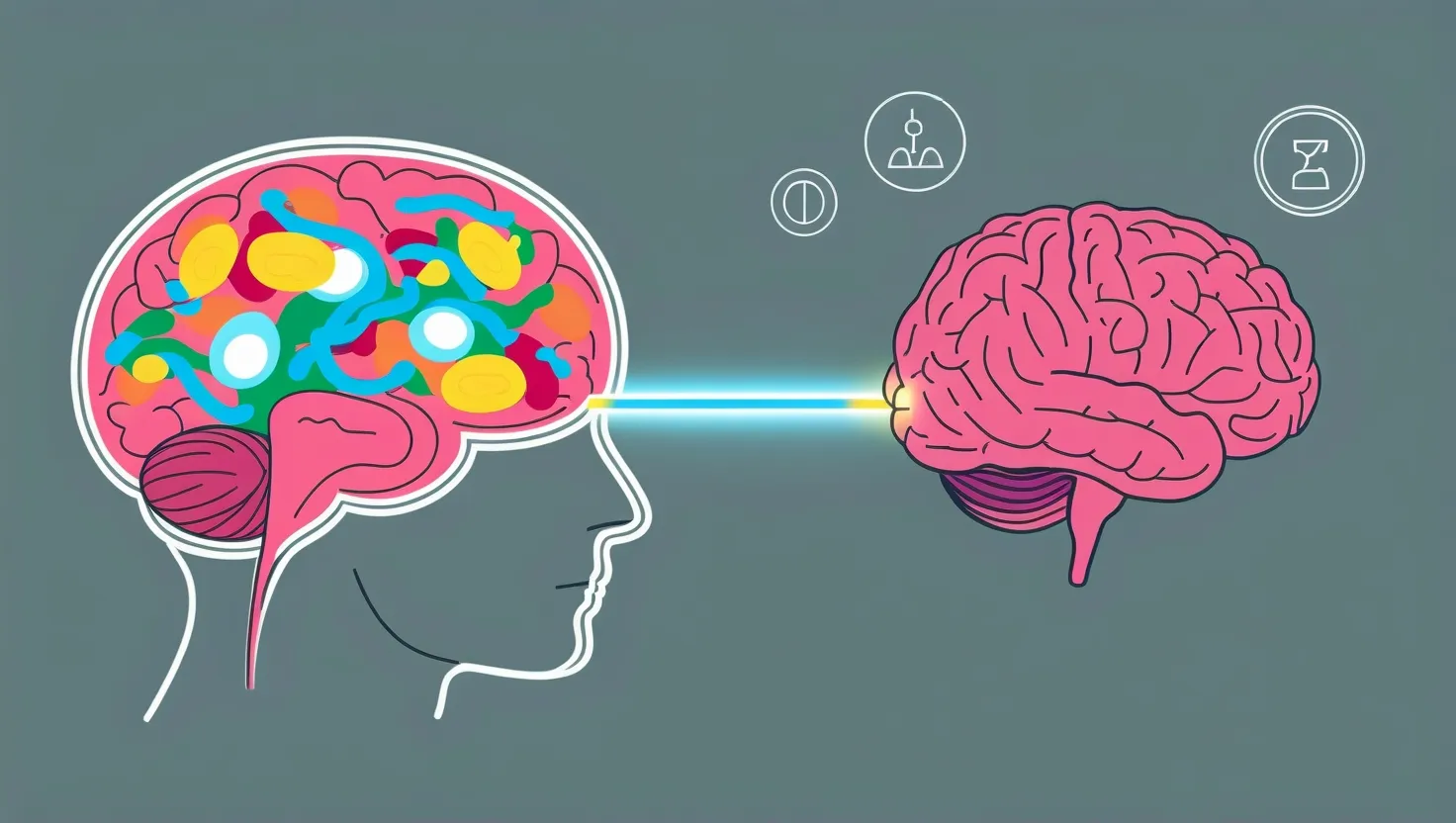In the intricate landscape of human emotions, there lies a hidden geometry that governs our behaviors and interactions. This geometry is not just about recognizing basic feelings, but about uncovering the intricate, self-repeating patterns that resemble fractals. Fractals, those infinitely complex patterns found in nature, from the delicate veins of a leaf to the majestic swirl of a galaxy, also permeate human behavior.
Imagine walking into a meeting room and sensing the tension before anyone says a word. You notice how a colleague’s minor frustration with a project mirrors larger issues in their life, such as stress at home or dissatisfaction with their career. This is more than just empathy; it’s about recognizing the fractal patterns that underpin human behavior.
The Fractal Nature of Emotions
Emotions are not isolated events but part of a larger, interconnected web. When we engage in complex thoughts, our brain networks organize into fractal-like patterns. These patterns repeat at different scales, meaning that the way we react to a small stress can mirror how we handle larger, more significant challenges[1][2].
For instance, consider a friend who consistently overgives in relationships. This behavior might seem like a simple act of kindness, but it often stems from a deeper pattern – a need to compensate for feelings of lack of self-worth. This fractal pattern repeats across various scales: in their personal relationships, at work, and even in how they treat themselves. Recognizing this pattern can help you understand why they might be exhausted or feel unappreciated, despite their efforts[1][4].
Observing and Understanding Fractal Patterns
To navigate these nested patterns, you need to develop the skill of observation and awareness. It’s about stepping outside your immediate experience and looking for the repeating themes in your life and the lives of those around you. Ask yourself, “Where else does this pattern show up?” This simple question can reveal a wealth of information about the underlying emotions and beliefs that drive behavior[4].
In my own life, I’ve noticed how my tendency to procrastinate on small tasks can escalate into larger procrastination patterns. This isn’t just about being lazy; it’s often a sign of deeper fears or anxieties about the task at hand. By recognizing this fractal pattern, I can address the root cause rather than just the symptoms.
Coaching and Redesigning Behavioral Fractals
Coaching can be a powerful tool in redesigning these behavioral fractals. It involves careful questioning, attention, and practice to dismantle negative patterns and replace them with more positive ones. For example, a young professional named Tara struggled with perfectionism and self-sacrifice, patterns that played out in both her personal and professional life. Through coaching, she was able to identify these saboteurs – her habitual defense mechanisms – and replace them with more constructive habits, such as prioritizing self-care and seeking help when needed[3].
The Impact on Social Interactions
Understanding fractal emotional intelligence can transform how you interact with others. It allows you to anticipate reactions and diffuse conflicts before they escalate. Imagine being in a team meeting where tensions are running high. By recognizing the fractal patterns of behavior – how individual frustrations mirror broader team dynamics – you can address the root causes of the tension rather than just its symptoms.
For instance, if a team member is consistently late to meetings, it might not just be about their time management skills. It could be a sign of a larger issue, such as feeling undervalued or overwhelmed by their workload. By addressing this underlying pattern, you can create a more supportive and productive team environment.
Fractals in Cognitive and Physical Behavior
Fractal patterns are not limited to emotions; they also appear in cognitive and physical behaviors. In mental rotation, lexical decision, and visual search tasks, fractal behavior is evident. Even physical behaviors like human gait, postural sway, and motor performances show fractal elements[2].
This means that the way you approach a simple task, like tapping your foot to a rhythm, can reflect larger patterns in your cognitive and motor functions. Recognizing these patterns can help you optimize your performance and reduce stress.
The Role of Self-Awareness
Self-awareness is crucial in navigating these fractal patterns. It involves recognizing how your emotions and behaviors are interconnected and how they repeat at different scales. For example, if you notice that you tend to overreact to minor setbacks, it might be a sign of a larger pattern of anxiety or stress. By addressing this pattern, you can develop more resilient coping mechanisms.
In my experience, developing self-awareness has been a game-changer. It’s allowed me to see how my reactions to small stressors can mirror larger life issues. This awareness has helped me manage my stress better and build more meaningful relationships.
Applying Fractal Intelligence in Daily Life
So, how can you apply this fractal view of emotions in your daily life? Here are a few strategies:
- Observe Patterns: Pay attention to the repeating themes in your life and the lives of those around you. Ask yourself where else these patterns show up.
- Identify Root Causes: Instead of addressing just the symptoms, look for the underlying emotions and beliefs that drive behavior.
- Practice Awareness: Develop the skill of stepping outside your immediate experience to see the larger patterns at play.
- Seek Feedback: Sometimes, it takes an outside perspective to see the fractal patterns that are hidden from us. Seek feedback from friends, family, or a coach.
By adopting this fractal view, you can turn every social encounter into a fascinating exploration of nested emotional patterns. It’s not just about empathy; it’s about understanding the hidden geometry of human interaction.
The Broader Implications
This approach to emotional intelligence has broader implications beyond personal relationships. It can be applied in various contexts, from workplace dynamics to societal trends. By recognizing the fractal patterns that govern human behavior, organizations can develop more effective strategies for behavior change and team management.
For instance, companies like Fractal Analytics and Final Mile Consulting are combining data science and behavioral science to understand and influence human behavior. They use innovative methods like games and simulations to drive sustainable behavior change across different contexts[5].
Conclusion
Understanding emotions as fractals is a powerful way to navigate the complexities of human behavior. It’s about seeing the intricate, self-repeating patterns that underpin our interactions and using this insight to build deeper connections and manage conflicts more effectively. By adopting this fractal view, you can enhance your emotional intelligence, optimize your performance, and create a more harmonious and productive environment in all aspects of your life.
In a world where emotions are viewed as fractals, every social encounter becomes an opportunity to explore and understand the hidden geometry of human interaction. It’s a journey that requires observation, awareness, and practice, but one that promises profound rewards in terms of personal growth, relationships, and overall well-being.






